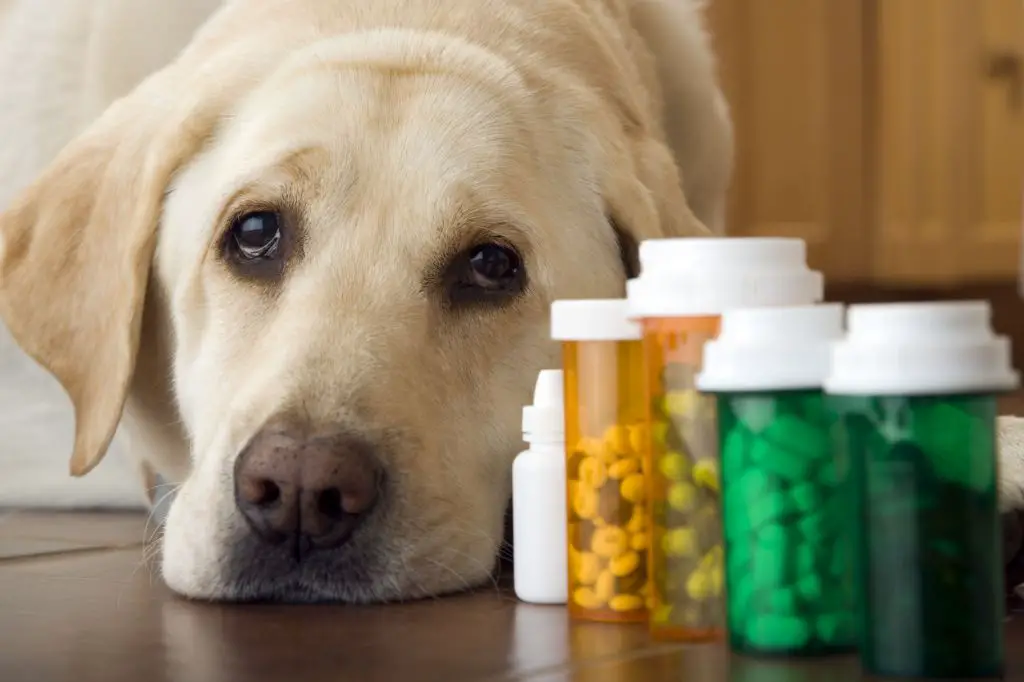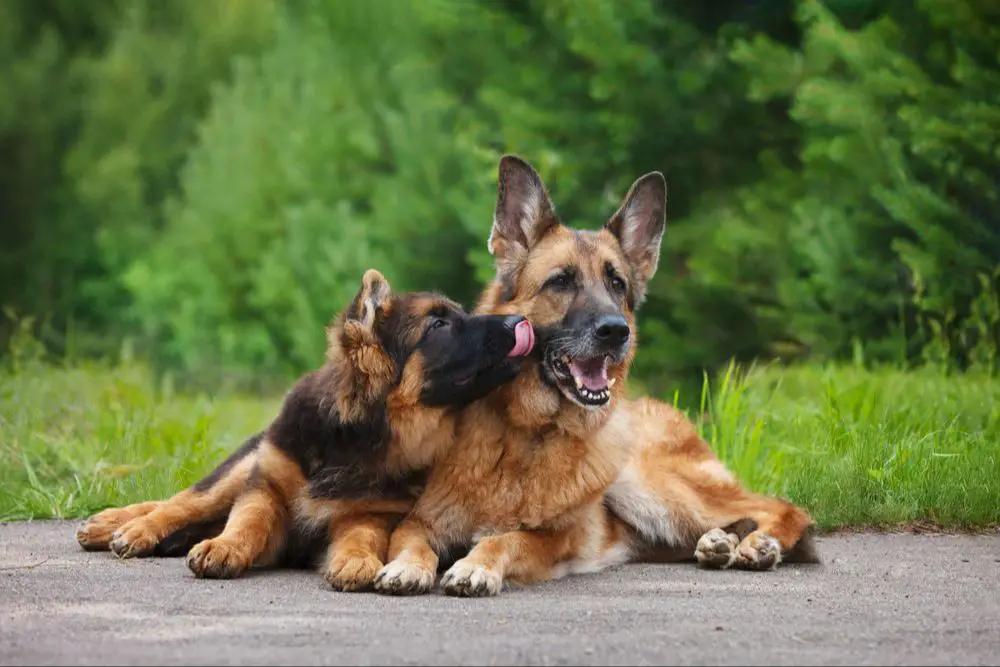Do Female Dogs Experience Menstrual Cramps?
Like human females, intact female dogs go through a regular estrous cycle which includes a period of menstruation or “heat.” During this time, the dog’s uterus releases its lining just like a human period. This is part of a normal reproductive cycle, but it can sometimes cause abdominal discomfort for the dog.
Some dogs show signs of cramping and pain during their menstrual cycle, especially as the flow becomes heavier. Symptoms may include restlessness, mild vomiting, loss of appetite, and enlarging of the vulva. Most dogs do not display obvious discomfort, but subtle signs during their heat may indicate cramping.
Spaying a dog before her first heat cycle can prevent menstruation altogether. While removing the ovaries eliminates heat cycles, some vets recommend leaving the uterus to avoid complications. Either way, spaying prevents both pregnancy and periods in female dogs. However, there are pros and cons to spaying that should be considered.
While menstrual cramps appear to be common in intact dogs, symptoms are usually mild with no medical intervention needed. Providing a warm place to rest and giving pain medication may help provide relief. If signs persist or seem severe, it’s a good idea to visit the vet to make sure there is no underlying illness causing the discomfort.
What Is a Dog’s Estrous Cycle?
The canine estrous cycle refers to the reproductive cycle of an unspayed female dog. It consists of four distinct phases:
Proestrus – This phase lasts 5-10 days. The dog’s vulva begins to swell and she will have some bloody vaginal discharge. Male dogs will be attracted to her but she will not allow mating.
Estrus – Also known as the fertile period, this phase lasts 5-10 days. The discharge lightens in color and the female will now accept a male for breeding. Ovulation occurs during this time. This is the stage where menstrual bleeding occurs if the dog does not become pregnant.
Diestrus – The 8-10 day period after estrus where the female dog’s discharge changes again. The cells lining her uterus either prepare for pregnancy or break down without pregnancy. The dog will no longer accept a male.
Anestrus – A period of sexual inactivity lasting 4-5 months. The cycle then repeats. The normal cycle for a dog in good health is twice per year.
Signs of Discomfort and Pain
When dogs are experiencing menstrual cramps and discomfort, they may exhibit some common physical and behavioral symptoms. These can include:
- Restlessness and irritability – Your dog may seem unsettled and have trouble getting comfortable. She may pace, whine, or act short-tempered.
- Increased abdomen sensitivity – Your dog’s belly may be tender and sensitive to touch during this time. Gentle pressure may elicit a reaction.
- Cramping – Contractions in the uterus can cause mild to moderate cramping. Your dog may stretch or change positions frequently.
- Loss of appetite – The pain and discomfort can lead to decreased appetite. Your dog may not want to eat as much.
- Lethargy and hiding – The cramps can make your dog feel rundown. She may sleep more and want to hide away in enclosed spaces.

Pay attention to these signs during the 2-3 weeks when your unspayed female dog is in heat. If the symptoms seem pronounced or distressing to her, a vet visit may be needed to check for potential complications.
When to See the Vet
While menstruation is normal for intact female dogs, you should always watch for concerning signs that may warrant medical attention. Be on the lookout for the following warning signs which could indicate serious health issues:
– A bloody or pus-filled vaginal discharge. This could signal a uterine infection like pyometra.
– A dark green or black discharge, which may indicate the presence of dead tissue.
– Significant lethargy, appetite loss or depression, which are not typical symptoms of a normal heat cycle.

– Excessive licking or irritation of the vulva.
– Straining or difficulty urinating. This may be a sign of a urinary tract infection.
– Crying, whining or other vocalizations indicating pain.
If you notice any of these symptoms in your dog when she is in heat, take her to the vet promptly for an examination. Timely treatment can prevent minor issues from becoming major emergencies.
Providing Comfort at Home
There are several things you can do at home to help ease your dog’s discomfort during her heat cycle:
Warm compresses – Place a warm (not hot) compress or heating pad on your dog’s abdomen to help soothe menstrual cramps and pain. Make sure your dog can move away if it gets too warm.
Extra bedding and seclusion – Give your dog soft, comfy bedding and a quiet space away from other pets where she can rest undisturbed during this time. She may appreciate having her own space.
Dietary supplements – Certain supplements like glucosamine, turmeric, fish oil, and boswellia may help relieve inflammation and discomfort associated with menstruation. Check with your vet before giving any new supplements.

Preventing Future Menstruation
The most effective way to prevent a female dog from having future menstruation cycles is to have her spayed (ovariohysterectomy). This surgical procedure involves removing both the ovaries and uterus. It requires general anesthesia and is done at a veterinary clinic or hospital.
The spay procedure typically takes 30-60 minutes, depending on the dog’s size and age. Most dogs recover quickly from spay surgery with minimal discomfort. Sutures or surgical glue are used to close the incision, which will take 7-14 days to fully heal. It’s important to limit activity and watch for signs of infection during the recovery period.
There are significant health benefits to spaying female dogs. Removing the ovaries and uterus eliminates the risk of pyometra, a life-threatening uterine infection. It also greatly reduces the risk of mammary tumors later in life. However, there are some potential disadvantages as well. Ovariectomy can lead to urinary incontinence in a small percentage of spayed dogs. There is also some evidence linking early spaying with increased orthopedic issues like hip dysplasia, particularly in larger breed dogs.
Menstruation in Intact Dogs
Unspayed female dogs typically go into heat and experience menstruation about twice a year. Their heat cycles usually last between 2-4 weeks from start to finish. The menstrual bleeding itself tends to last around 5-10 days on average.
It’s very important to contain an intact dog during her fertile period, usually about 10 days of the heat cycle, to prevent unwanted pregnancy. Keep dogs confined and away from male dogs during this time. Walk them on a leash and supervise any time outside.
Clean up any spots of blood or discharge with an enzymatic cleaner to avoid attracting male dogs. Feed meals on easy to clean floors, not bedding or carpets. Gently wipe a dog’s underside if needed to keep her clean. Increase potty breaks during peak bleeding to maintain sanitation.
Pregnancy Prevention
Preventing unwanted pregnancies is especially important during your dog’s heat cycle. Here are some tips:
Keeping males separated during estrus: It’s critical to keep intact males away from females in heat to avoid accidental mating. This means keeping dogs in separate rooms of the house and walking them at different times during the estrus period. Some owners board males while females are in heat.
Mating avoidance and deterrents: There are products available to make a female less attractive to males during her heat. Dog appeasing pheromones mimic natural chemicals that provide comfort. Pheromone sprays or diffusers can be used in the home to help deter males. Elizabethan collars and clothing for dogs can also deter mating when supervised.
Emergency contraception if accidental breeding occurs: If an accidental mating does happen, emergency contraceptives like Alizin can be administered by a vet within 2-3 days to prevent pregnancy. Spaying is also an option within 4-6 weeks after breeding.
Common Myths
There are several misconceptions people have about estrus and the health risks for intact female dogs. One myth is that going through estrus cycles increases a dog’s risk of reproductive cancers. However, research shows that spaying a dog before their first heat cycle does not decrease cancer risk and may even increase the risk of certain cancers. There is also a myth that female dogs have PMS mood swings before or during estrus. While some dogs do exhibit behavioral changes, true PMS does not occur in dogs. Female dogs do not experience the same hormonal fluctuations and symptoms as human females during menstruation.
When to Expect Menstruation
The average age for a dog’s first heat cycle is between 6-24 months, but this can vary substantially by the dog’s breed and size. Smaller breeds tend to experience puberty and their first estrous cycle earlier, while giant breeds can take up to 24 months to sexually mature. Factors like health, genetics, and nutrition can also affect the onset timing.
Early signs of puberty in female dogs include subtle behavior changes around male dogs, swelling of the vulva, and discharge of vaginal fluid. Owners should watch for these indicators of the first heat cycle starting between 6-12 months in small breeds and closer to 18-24 months in giant breeds. The first cycle may begin abruptly and without obvious warning signs, so owners should familiarize themselves with what to look for as their dog reaches sexual maturity.
While most dogs experience their first heat around 1 year old, the estrous cycle is extremely variable between individuals. Remaining observant of your dog’s development can help you identify the onset of sexual maturity and prepare for their first menstruation.
